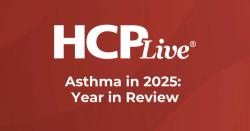
OR WAIT null SECS
ERS Shares New Treatment Guideline for Chronic Cough
The 12-year update highlights promising novel therapy classes, and sets disparities between pediatric and adult chronic cough treatment.
Dr. Alyn H. Morice
New clinical practice guidelines for chronic cough from the European Respiratory Society (ERS) provide the first update to recommended screening, diagnosis, and treatment for the condition in 12 years.
The guidelines, presented at the ERS 2019 Congress in Madrid this week, reflect recent advances in understanding as to the pathophysiology and optimized care for chronic cough. According to the American Lung Association, symptomatic, refractory, and idiopathic chronic cough persists in patients for 8 weeks or longer—though each varies in response to treatment.
A team of authors, led by Dr. Alyn H. Morice, head of Respiratory Medicine and the Center for Cardiovascular & Metabolic Research at the Hull York Medical School, explained in the new guidelines how interpretation of chronic cough has benefitted from an improved understanding of its drivers.
“The concept of cough hypersensitivity has allowed an umbrella term that explains the exquisite sensitivity of patients to external stimuli such a cold air, perfumes, smoke and bleach,” the authors wrote. “Thus adults with chronic cough now have a firm physical explanation for their symptoms based on vagal afferent hypersensitivity.”
As cough-variant asthma and eosinophilic bronchitis have been shown to respond to anti-inflammatory therapy—and non-acid reflux shows better response to promotility agents than the previously preferred anti-acid drug class—authors noted more treatable traits have come to the forefront of care.
Morice and colleagues also noted the benefit of therapies for patient neuromodulation, for the sake of antitussive treatment.
“Low-dose morphine is highly effective in a subset of patients with cough resistant to other treatments,” they wrote. “Gabapentin and pregabalin are also advocated, but in clinical experience, they are limited by adverse events.”
However, the most developments in practiced chronic cough pharmacotherapy, they observed, are drugs shown to block afferent nerve excitability—such as the ATP receptor (P2X3). P2X3 receptor antagonist therapies, while in relatively early phases of clinical assessment, have been associated with effective symptom and cough frequency treatment in patients when compared to placebo.
“Finally, cough suppression therapy when performed by competent practitioners, can be highly effective,” authors wrote.
Regarding pediatrics, Morice and colleagues emphasized the commonality of foreign body inhalation in toddlers, as well as persistent bacterial bronchitis—a once-unrecognized driver of wet cough in children.
Antibiotics can serve as a curative treatment in pediatric patients, though specific algorithms of care should be adhered to.
“Children are not small adults and a pursuit of an underlying cause for cough is advocated,” they wrote.
The guidelines, “ERS guidelines on the diagnosis and treatment of chronic cough in adults and children,” were published online in the European Respiratory Journal.


